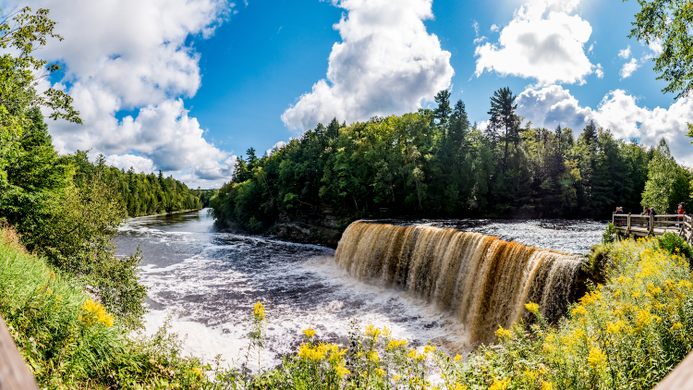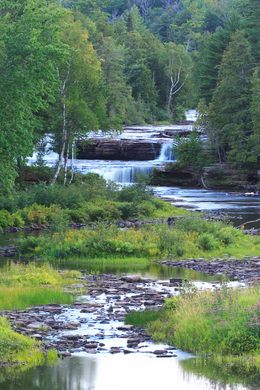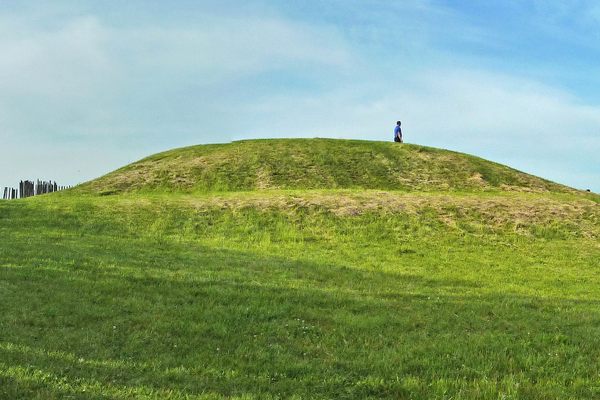AO Edited
Tahquamenon Falls
These dramatic cola-colored falls have appeared in a poem by Henry Wadsworth Longfellow and a song by Sufjan Stevens.
Within the second-largest of Michigan’s state parks resides the second-largest waterfall east of the Mississippi: Tahquamenon Falls. (“Tahquamenon” rhymes with “phenomenon.”) The falls are actually a series—the largest of which, called the Upper Falls, stretches 200 feet wide and 48 feet high. Downriver of the Upper Falls you can find the Lower Falls, a series of five waterfalls cascading around a rowboat-accessible island.
The falls were first made famous by Henry Wadsworth Longfellow’s “The Song of Hiawatha,” in which the main character Hiawatha builds his canoe “by the rushing Tahquamenaw.” Long before white men like Longfellow set eyes on the falls, however, it was long-used as a hunting and fishing site by the Ojibwa natives. Then, in the 1800s the river was used by loggers who used its current like a highway to transport timber harvested from deep in Michigan’s upper peninsula to mills along the riverbank.
The trademark brown, cola-like color of the river is due to tannic acid absorbed from the surrounding cedar trees. Because of the color fo the water, this feature is known to some as “Root Beer Falls.”
More recently, the falls made an appearance on Sufjan Steven’s 2003 album Greetings from Michigan: The Great Lake State in the form of a song title.
Know Before You Go
Once inside Tahquamenon State Park, there is clear signage for both the upper and lower falls. There will be a small parking fee. Once parked, just follow the easily marked paved trails to whichever falls you wish to visit. Parking fees are listed below. Don't forget to try a pasty before you leave the U.P.!























Follow us on Twitter to get the latest on the world's hidden wonders.
Like us on Facebook to get the latest on the world's hidden wonders.
Follow us on Twitter Like us on Facebook